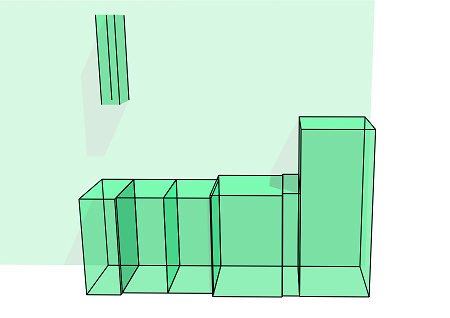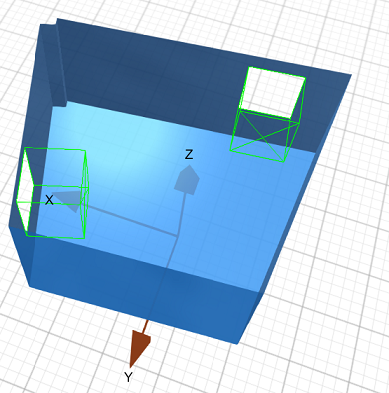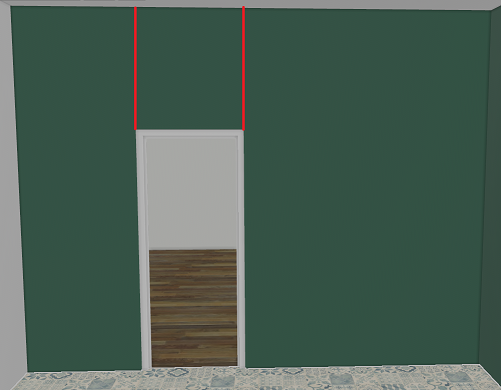Room's Layout Impact
Context
In application, the Automatic Proposal AI results are influenced by template rules (constraints, replacements, specific furniture) but also by its application environment. Indeed, the room agency can have a huge impact on the propositions and knowing these details will help to understand the results layouts, and modify them if necessary.
Bays Bounding Box
Doors and Windows
In computer science, for all 3D apps, we use a concept that is called “bounding box”. It means that we represent a 3D object such as a furniture or a bay, with a simple cube of the same size. Those bounding boxes are specifically used to handle collisions between other elements (other furniture, bays, walls). The reason of why we do this is to simplify our calculations that improves considerably the computation time needed to perform them.
In our applications, bays such as doors or windows have a huge impact on the placement of your template. It can change completely the furniture arrangement to avoid placing a fridge in front of a window. On a technical point of view, we use this concept of “bounding boxes” to represent each bays to perform collisions calculations.
 |
|---|
| The bounding boxes of a kitchen template |
The particularity of our applications is that bays bounding boxes are “inflated”, which means that the cube is a little larger than the bay itself. We do this to enter in collision with furniture that are placed in front of it which will prevent placing a furniture in front of them. Moreover, this inflation is often larger in a specific orientation depending on the bay’s opening side. For example, if we have a window that opens from the inside, the bounding box size will be larger towards the inside to let the space needed to open it.
 |
|---|
| Windows bounding boxes inflated |
As we can see in the image above, the green elements are windows bounding boxes. And as explained before, the bounding boxes are inflated towards the inside. It is due to the fact that windows opening sides are oriented towards the inside. If their opening sides were inversed, then the inflation would have exceeded towards the outside.
Special case of sliding doors and windows
The inflation is less large for sliding doors/windows because the space needed to open them is smaller. However, their bounding boxes are still inflated to not obstruct them with furniture in front.
Door placement and decorations
The user should never expect to have a decoration above a door such as a plant or a clock. Currently, our algorithm is using wall faces to work. When we place a door in a room, we slice the wall face in two part where the “middle” of this slicing is the door itself. It means that we do not take in account the wall part above the door because we get rid of this segment during the slicing.
 |
|---|
| The “ignored” wall segment is the colored part in red above the door |
Therefore, the fact that we ignore this segment of the wall during our calculations makes it impossible to decorate this part.